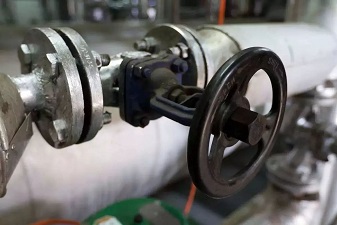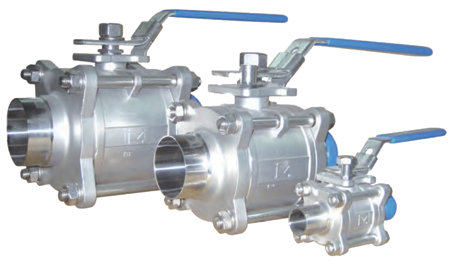Sanitary Valves VS Industrial Valves

As the name implies, the sanitary valve refers to the health standards (medical or food standards) valves. The valve body shall meet the hygienic standard of stainless steel and all contact parts with the medium shall be mirror polished, both polishing and cleanliness are subject to hygienic standards for valve assemblies. Sanitary valve is mainly used in clean areas of food processing, pharmaceuticals, and hospitals, as well as places with high requirements for hygienic grades and no physical or chemical hazards.
Sanitary valves have requirements for their body materials and sealing material. Sanitary valves are basically made of stainless steel, and their seat covers must be non-toxic, such as hard seals made of stainless steel and soft seals made of rubber. The common sanitary valves are sanitary butterfly valves, sanitary ball valves, sanitary check valves, sanitary electromagnetic valves, and sanitary diaphragm valves.
Mechanical seal requirements for sanitary valves
*It conforms to the requirements of GMP;
*Surface finish must be above 1.6;
*The contact surface can be cleaned and disinfected in situ;
*Smooth transition without stacking;
*There is a structure outside the sealing surface to prevent cross-cutting;
Strictly speaking, the sanitary valve has a high standard of manufacture, and it is mainly developed for some biological fermentation enterprises, so there is a special requirement for the smoothness of the valve runner.
The difference between a sanitary valve and an industrial valve
The contact parts between sanitary valves and media are mostly made of stainless steel, the material is generally 304SS or 316 stainless steel, which is a non-toxic and harmless material with a clean and smooth surface that will not cause corrosion and peeling. Sanitary valves are in many ways beyond the reach of industrial valves, such as cleanliness, installation methods, etc., so they are specialized valves for food, medicine, and other industries.
Industrial valves are generally designed according to operating conditions, many of which are used in high-temperature and high-pressure working environments. Industrial valves are characterized by long service life and flexible operation mode and are widely used in machinery, metallurgy, petrochemical, chemical industry, urban construction, and other industries. Although the appearance and interior of industrial valves are not as smooth and beautiful as that of sanitary valves, they are not replaced by sanitary valves in many places.
All sanitary valves should be sterilized to meet certain hygienic requirements. Non- sanitary valve manufacturers are not allowed to produce such valves because many of the toxic ingredients (such as lead) in non-hygienic valve materials are not removed, which can easily lead to poisoning, cancer, and even death.





